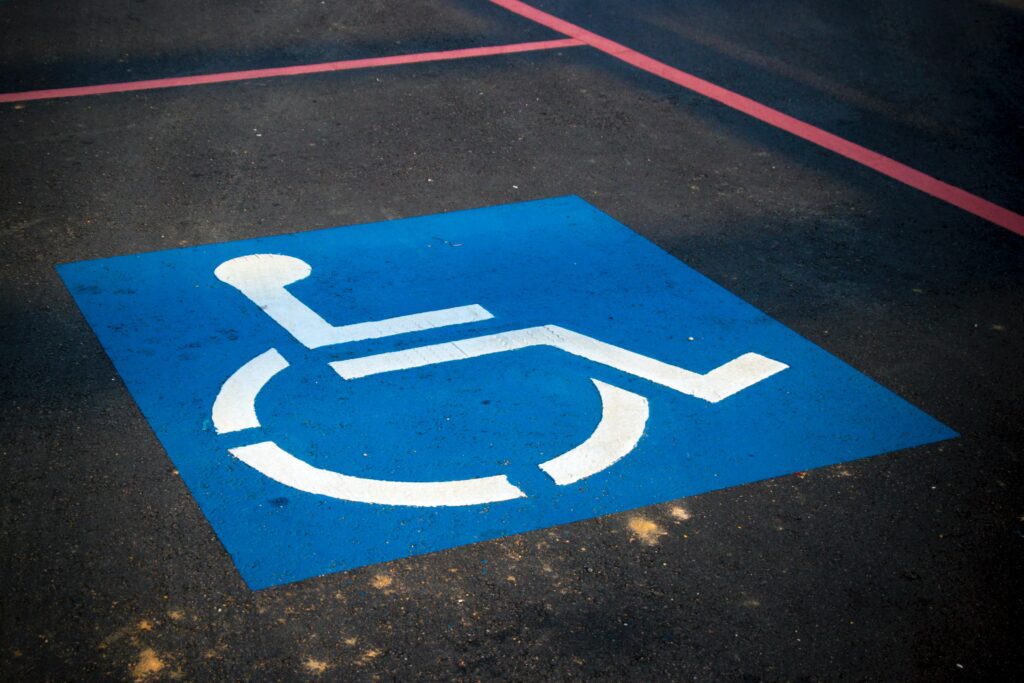Several months ago, the Americans with Disabilities Act (ADA) celebrated its 33rd anniversary. The law, which prohibits discrimination against people with disabilities, currently covers support and assistance for approximately 42 million people in America. Mandated compliance with ADA statutes creates a large marketplace for construction projects. 2024 will be a banner year for firms interested in partnering with local governments to deliver compliance.
Most public transportation systems are now accessible for people with disabilities, but about one-third of the country’s rail transit stations are not compliant. That will create an abundance of contracting opportunities in 2024. Rail transit represents the largest opportunity to expand ADA compliance, and public officials are aggressively accessing federal funding to reverse this problem.
Last year, $686 million was allocated for projects through a federal program known as the All-Stations Accessibility Program. Another $343 million has just been earmarked for more upcoming projects. In total, $1.7 billion was made available for ADA compliance projects, but the program is only authorized through 2026.
The Chicago Transit Authority will spend $148 million in 2024 to remodel three subway stations. The upgrades to Irving Park Station, Belmont Station and Pulaski Station will cost $42 million, $47 million and $59 million, respectively, with ADA accessibility being the primary focus. Most of the funding was provided by a $118 million grant from the federal All-Stations Accessibility Program. Design work on all projects began in 2023 and should be completed by mid-2024, with solicitations to follow. The project will include modifications for each station to bring them into ADA compliance. Elevators and other amenities will be installed in some stations to accommodate passengers.

Photo by AbsolutVision on Unsplash
The Southeastern Pennsylvania Transportation Authority received $56 million from the Infrastructure Investment and Jobs Act. The funding will be used to install ramps, elevators and other improvements at numerous stations. More than $216 million is budgeted for the work. Construction will include installing elevators, renovating existing platforms and station interiors, new signage, lighting, security cameras and waterproofing improvements. The Ellsworth-Federal subway station on the Broad Street Line will receive the same upgrades at a cost of $19.82 million. Upgrades at the Fairmont Station carry an estimated cost of $35 million. Making the Chinatown Station fully ADA accessible will cost approximately $10 million, and the Hunting Park Station on the Broad Street Line will be ADA compliant at $24.76 million. Other stations scheduled for work on ADA compliance include:
- Snyder Station at a cost of $30.36 million.
- Wyoming Station compliance with a projected cost of $24.76 million.
- Logan Station upgrades budgeted for $24.76 million.
- Lombard-South Station for work budgeted at $19.82 million.
- 34th Street Station with upgrades anticipated to cost $31 million.
In Naugatuck, Connecticut, the Connecticut Department of Transportation will locate a new transit station along the New Haven Waterbury Branch Line to accommodate commuters with disabilities. The project is budgeted for $26 million. Officials will consolidate $20.8 million in federal funding with $5.2 million in state funding. The new facility will have multiple elevators with commuter mobility between floors. Commuters will have access to a two-story elevator tower that connects passengers to drop-off areas with a ticket vending machine. The design will also include handrails to ensure greater accessibility and an integral heating system, benches, windscreens, lighting and canopies. The area near the passenger drop-off zone will feature parking spaces for 80 vehicles with spaces designated for ADA accessibility.
The New Jersey Transit Corporation received a $34 million federal grant to implement accessibility improvements at several NJ Transit rail stations. The funding will cover upgrades at three stations, and the work will be split into two projects. The first has a cost estimate of $18.2 million to upgrade two stations – the Anderson Street Station in Hackensack and the New Bridge Landing Station. Once delivered, both will be fully ADA-accessible. Improvements will include installing high-level platforms, ramps, tactile warning strips, accessible parking spaces and upgraded communications systems. The second project has a cost estimate of $14.5 million and will involve similar improvements at Bradley Beach Station. Solicitations for construction services will be issued when the design phase has been completed.
The mayor of Providence, Rhode Island, has approved a Capital Improvement Plan that outlines $132 million for infrastructure improvements over the next two years. A total investment of $26 million will address sidewalk repairs and ADA accessibility. One of the projects calls for a $20.83 million investment in upgrades to Hope Street and Ferry Road to increase accessibility. Planning documents are being developed to consolidate what at one time were six projects into a single project, which will address 14 bridges and six miles of pavement. The work will include resurfacing certain stretches of roads. Sidewalks flanking the roadways will be repaired or replaced as needed to fit ADA compliance standards. The city’s project team has created several potential design options for improvements, including changes to pavement materials and curb modification. Design work will begin in 2024, with construction slated to follow.
The Greater Cleveland Regional Transit Authority in Ohio announced an upcoming project to make the East 79th Street light rail station fully ADA accessible. The project’s $8 million cost will be covered by federal funding. Goals include rehabilitating the station to ensure that it meets current ADA guidelines. The work will consist of components such as ADA-compliant crosswalks next to the station, a new bus shelter, covered access over stairways, ramps leading to the station platform and improved access to neighboring Hillside Community Park. The eastbound and westbound tracks will each receive light rail platforms and ADA-compliant pedestrian grade crossings for access between platforms. Project designers have also planned numerous aesthetic additions, including new site furnishings, enhanced wayfinding and upgraded signage, LED lighting, steel framed canopy systems, and security and communications equipment.
These types of ADA projects can currently be found throughout the U.S.; firms that can consolidate a team to deliver the contracting work will be in high demand.

As President and CEO of Strategic Partnerships, Inc., Mary Scott Nabers has decades of experience working in the public-private sector. A well-recognized expert in the P3 and government contracting fields, she is often asked to share her industry insights with top publications and through professional speaking engagements.
Tags: 2024 market trends, accessibility projects, accessible transit solutions, ADA compliance, ADA improvement projects, Americans with Disabilities Act, community infrastructure, Construction opportunities, disability rights, federal funding for ADA, federal grants for accessibility, government partnerships, Inc., inclusive design, infrastructure development, local government collaborations, public sector contracting, public transportation accessibility, rail transit accessibility, SPI, Strategic Partnerships, Transportation Infrastructure, urban development






 RSS Feed
RSS Feed